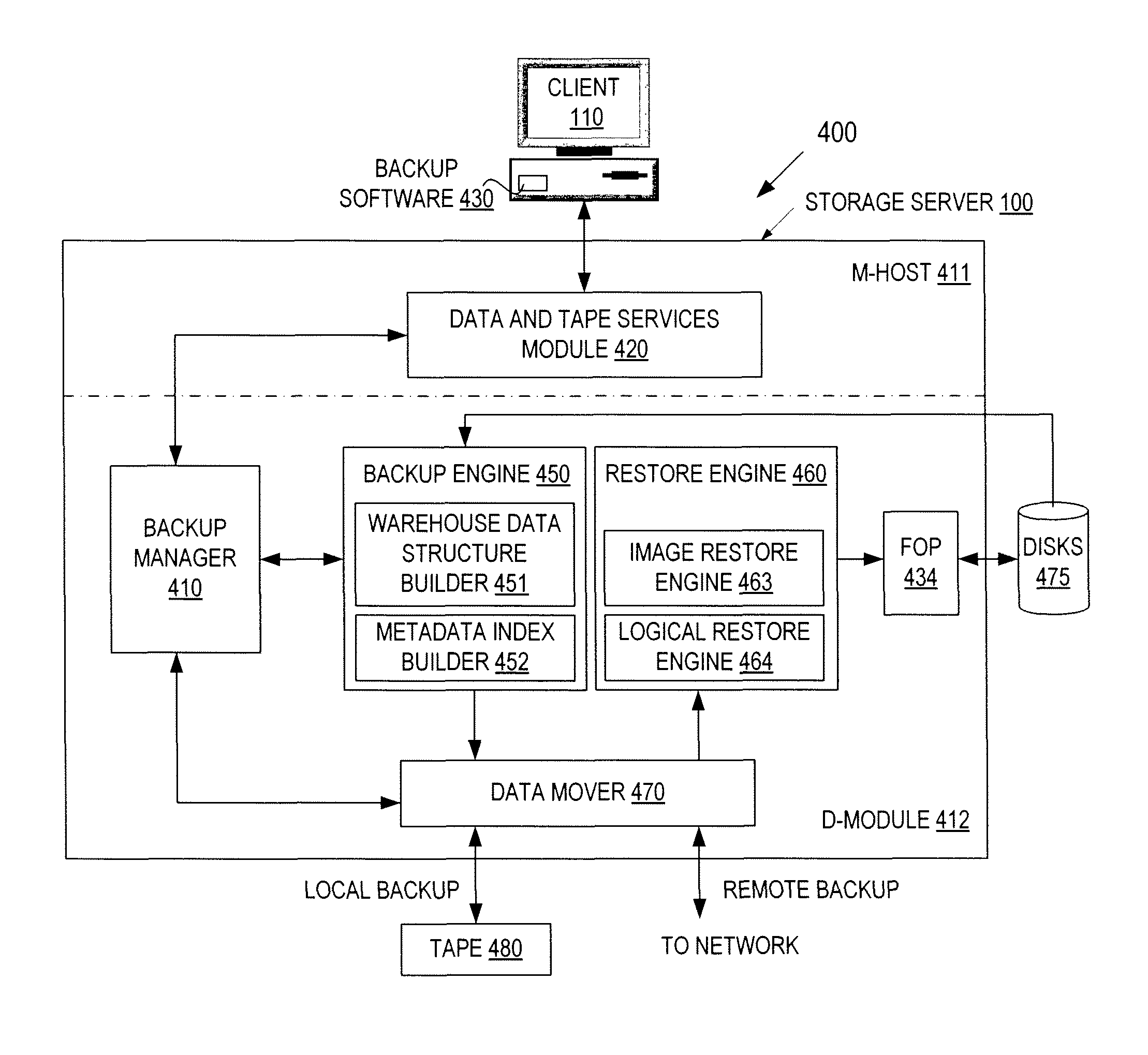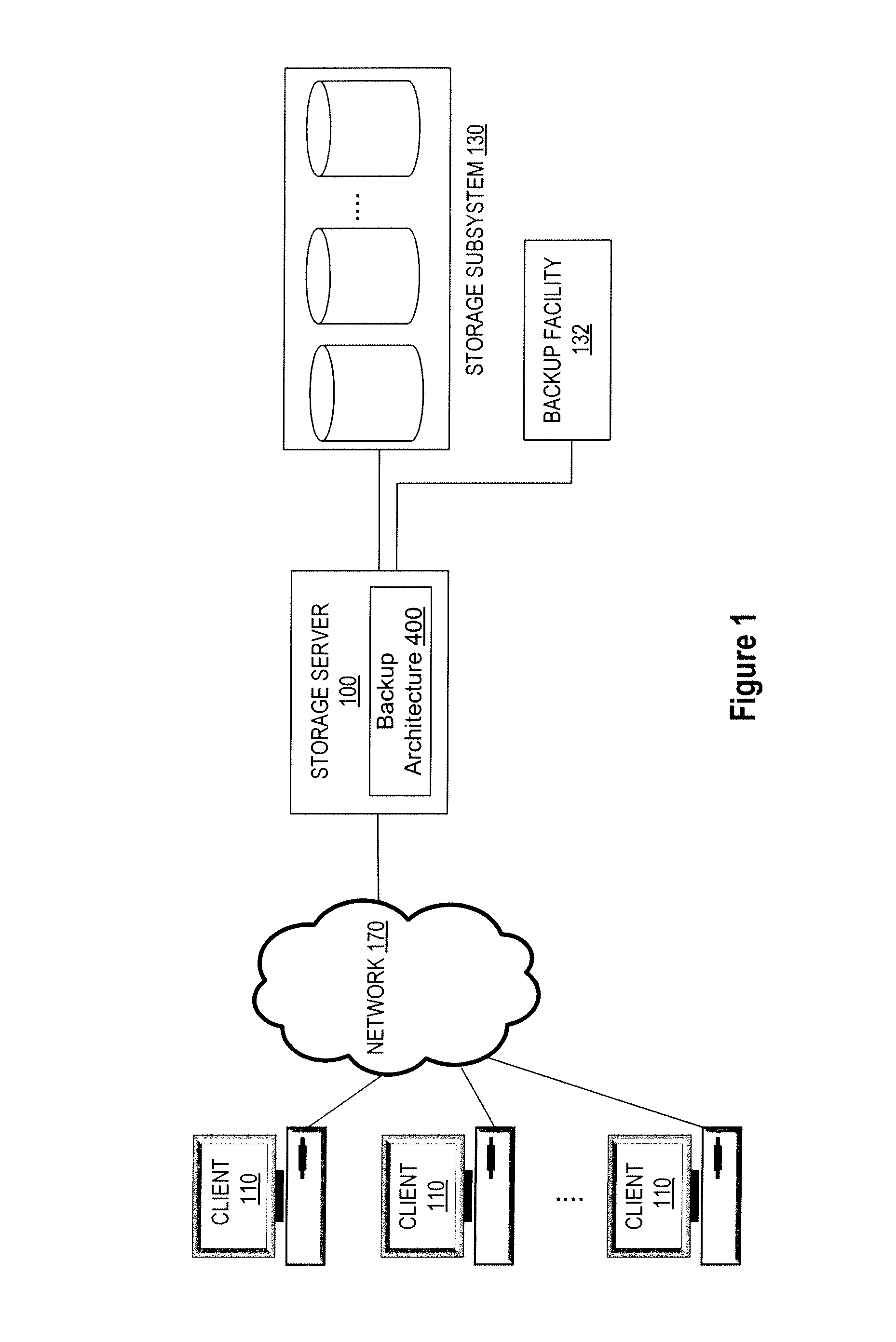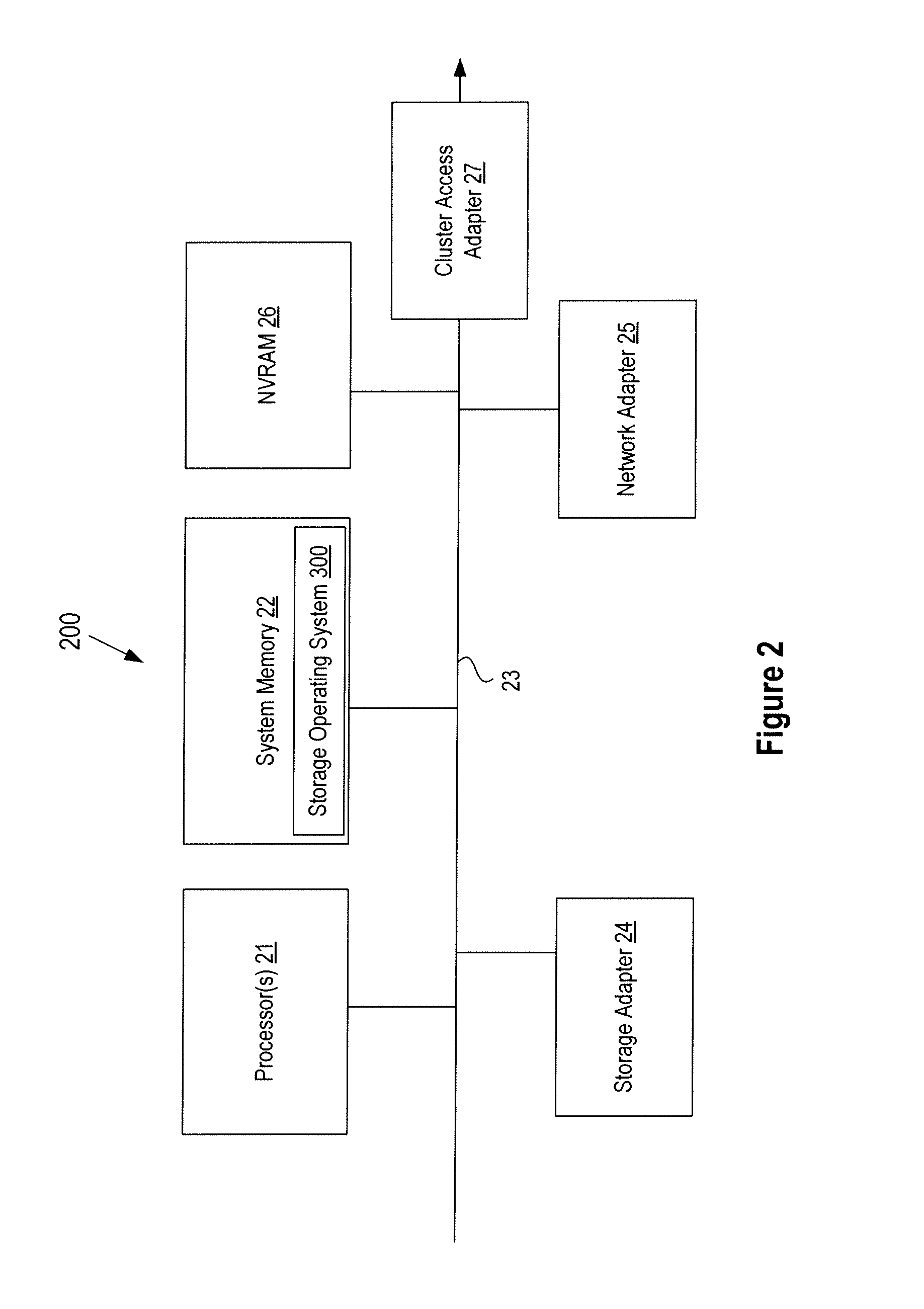Single file restore from image backup by using an independent block list for each file
a single file and image backup technology, applied in the field of storage servers, can solve the problems of limiting performance, incurring a significant file system overhead, and limited backup performance of conventional backup techniques
- Summary
- Abstract
- Description
- Claims
- Application Information
AI Technical Summary
Benefits of technology
Problems solved by technology
Method used
Image
Examples
Embodiment Construction
[0020]Image-based data restoration is described. References in this specification to “an embodiment”, “one embodiment”, or the like, mean that the particular feature, structure or characteristic being described is included in at least one embodiment of the present invention. However, occurrences of such phrases in this specification do not necessarily all refer to the same embodiment.
[0021]Image-based data restoration restores data of a volume from one or more backup images that are created by one or more image-based backup operations. An image-based backup operation stores a backup image in backup storage using data blocks as a basic backup unit. A data block may be a block of a file or a directory. The backup image is designed to support time-efficient backup operations as well as space-efficient backup storage. With respect to time efficiency, the data blocks can be stored without any ordering constraints imposed on the data blocks. With respect to space efficiency, all of the in...
PUM
 Login to View More
Login to View More Abstract
Description
Claims
Application Information
 Login to View More
Login to View More - R&D
- Intellectual Property
- Life Sciences
- Materials
- Tech Scout
- Unparalleled Data Quality
- Higher Quality Content
- 60% Fewer Hallucinations
Browse by: Latest US Patents, China's latest patents, Technical Efficacy Thesaurus, Application Domain, Technology Topic, Popular Technical Reports.
© 2025 PatSnap. All rights reserved.Legal|Privacy policy|Modern Slavery Act Transparency Statement|Sitemap|About US| Contact US: help@patsnap.com



